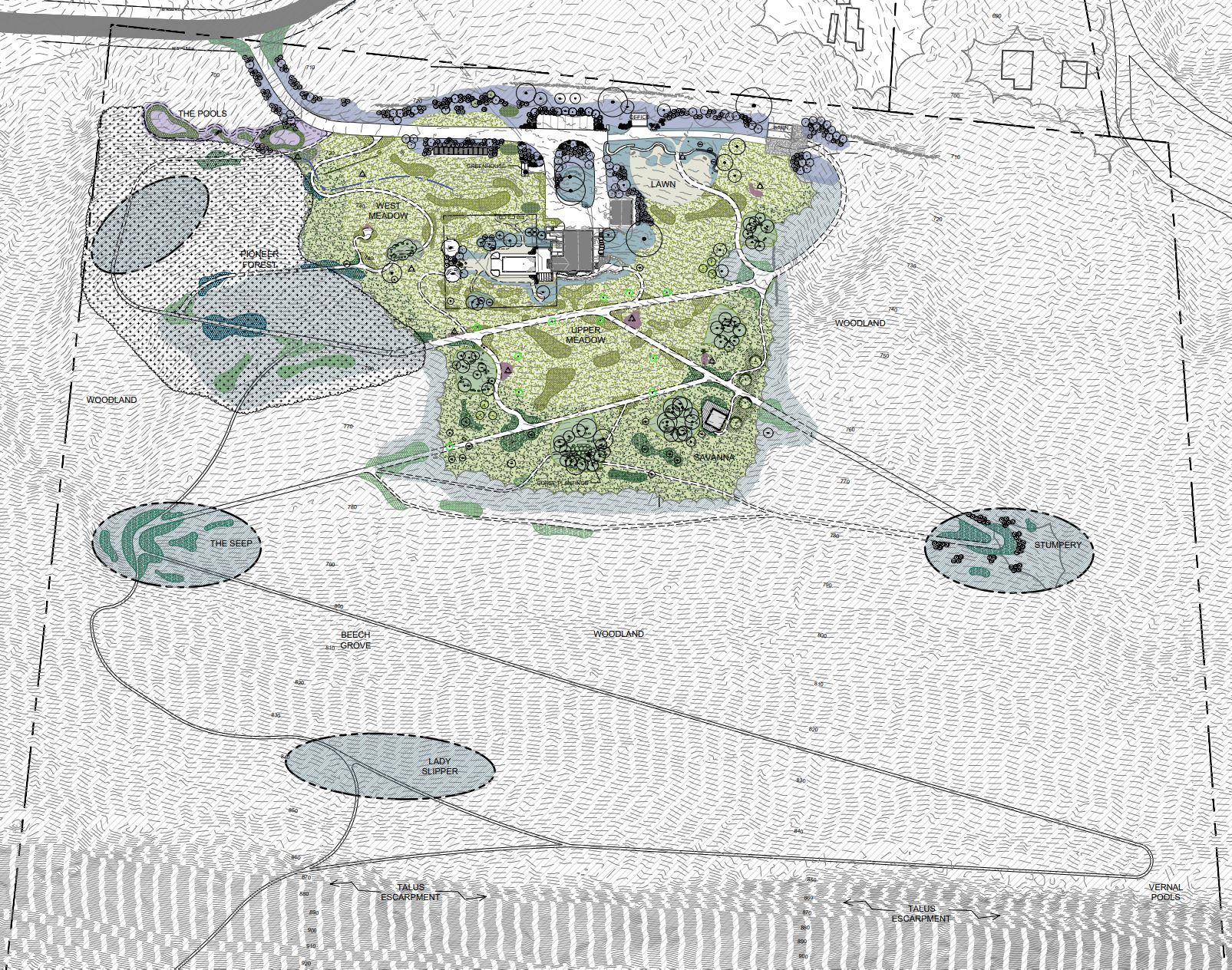Through an iterative process of study and design, the landscape architecture firm of Oehme van Sweden (OVS) and the Allises created The Bower Master Plan. The master plan was based upon study of history, geology, soils, topography, hydrology, local ecology, our stated design intent and various precedent gardens within the mid-Atlantic and northeast region. These findings are documented in a pictorial report available for review by visitors.
The Bower resides within the Ridge and Valley ecoregion of the Appalachian Mountains within central Pennsylvania. Our design takes inspiration from the significant horizontal folding of the Kittatinny Ridge that occurred within Pennsylvania during mountain formation. This significant geologic feature, referred to as the Pennsylvania Salient, provides inspiration for our trails, land art forms and monumental steel and stone sculptures. Visitors will traverse the meadow and forest landscape of The Bower through a series of paths that zig-zag across its sloped terrain in a pattern that echoes the folds of the Appalachian Mountains and the switchbacks of the trails that traverse them.
The Bower meadow was not farmed for more than 50 years, and though originally a hay meadow, native grasses and forbs had begun to re-establish with annual mowing. Predominant native meadow species included: Purpletop (Tridens flavus), Little Bluestem (Schizachryum scoparium) , Broom Sedge (Andropogon virginicus), Butterfly Weed (Asclepias tuberosa), Golden Ragwort (Packera aurea), and various goldenrod (Solidago spp.) and aster species. Along the woods edge in more shady savanna like conditions Curly-styled Wood Sedge (Carex rosea), Hay-scented Ferns (Dennstaedtia punctilobula), and various mosses prevailed.
In the recent past, the Allises started an ongoing and rigorous practice of eliminating forest encroachment and controlling invasive forbs, grasses, vines, and shrubs in the meadow, copses, and forest. The primary invasive plants targeted include: Japanese stilt grass, honey suckle and barberry, autumn olive, multiflora rose, garlic mustard, thistle, mile a minute and cool weather European grasses. Invasive control was performed via cutting, pulling and mowing.
The horticultural design, developed by Larry Weaner Landscape Associates (LWLA), highlights and expands the native plant palette on the property. The Allises and LWLA worked on the design, establishment and management plans throughout the first half of 2020 and strategically planted in the ensuing dormant period of late fall. The existing meadow was supplemented with new plant material. Thousands of live native perennials and grasses were introduced in meadow drifts to provide structure to guide the eye, highlight trails and accentuate sculpture locations. Specially designed native seed mixes were developed for meadow, savanna (shadier meadow to woods edge transition areas) and pond edge areas where recent construction activity disturbed the soil. Extensive garden areas surrounding various site structures were developed and planted with native grasses and forbs to define residential areas and accentuate public spaces. Flowering shrub drifts and trees were added to outline special areas and provide screening. Additional herbaceous plants and shrubs were introduced in more remote pioneer forest and pond edge areas to enhance those areas for visitors. An image of our horticultural design is included below.

bower (noun) 1. a pleasant shady place; 2. a retreat or sanctuary